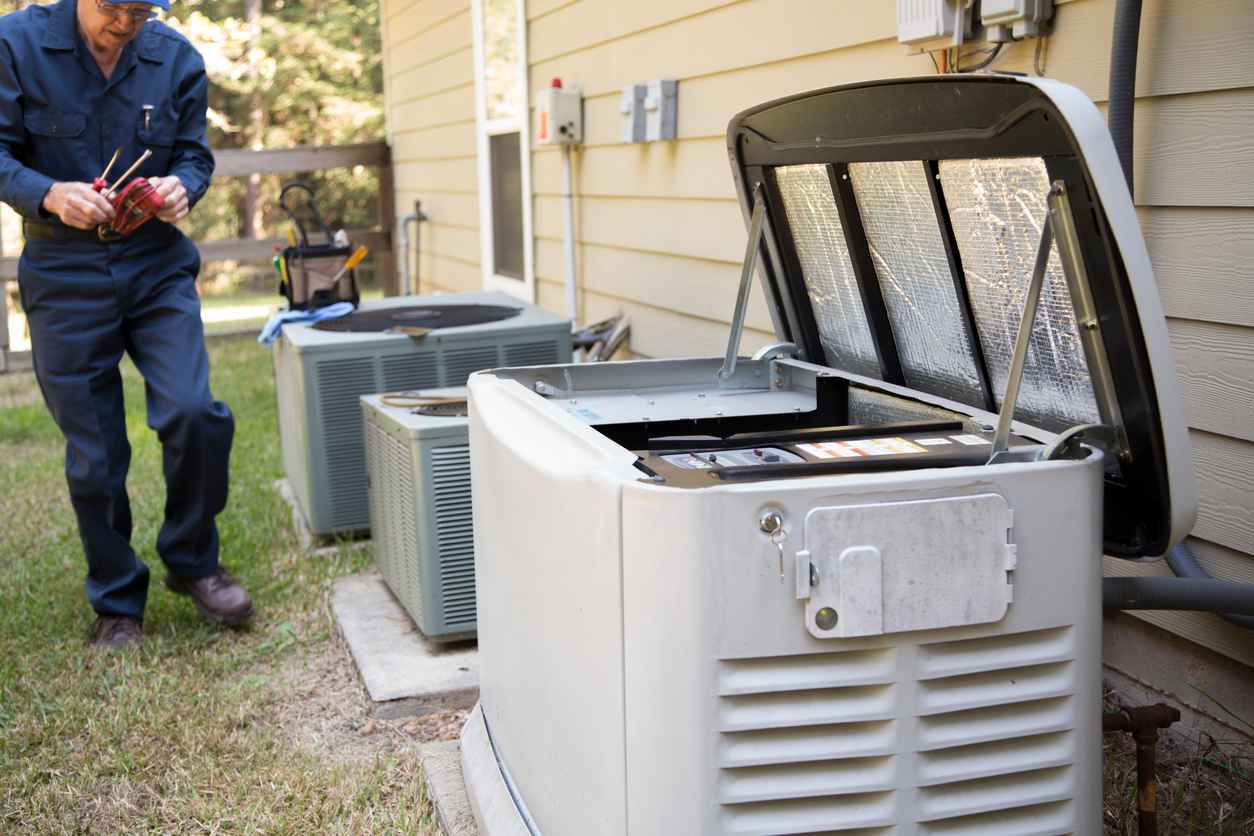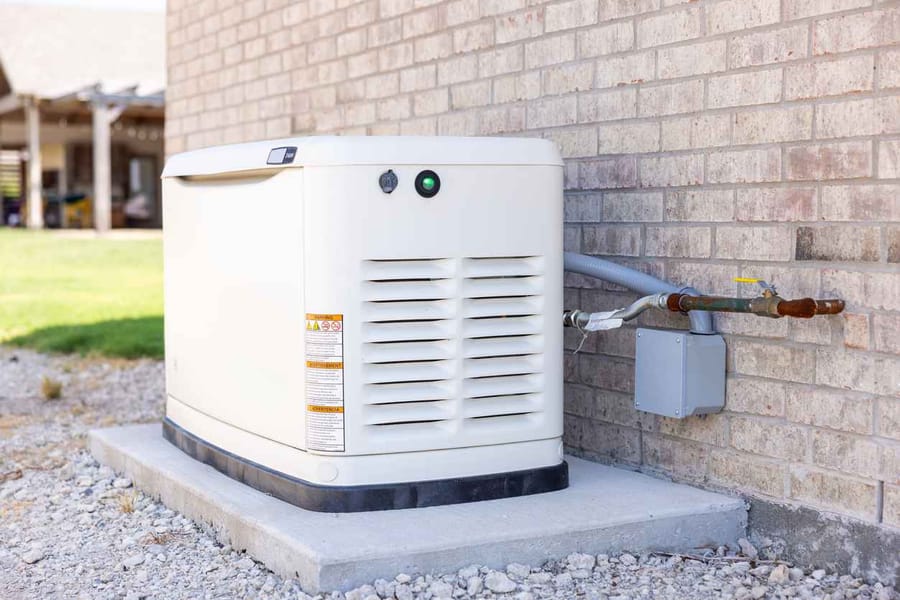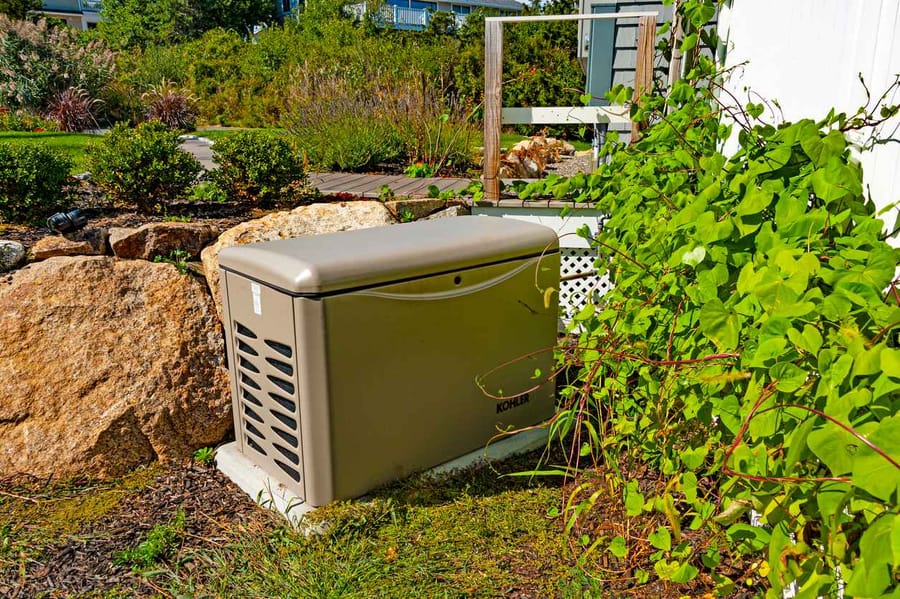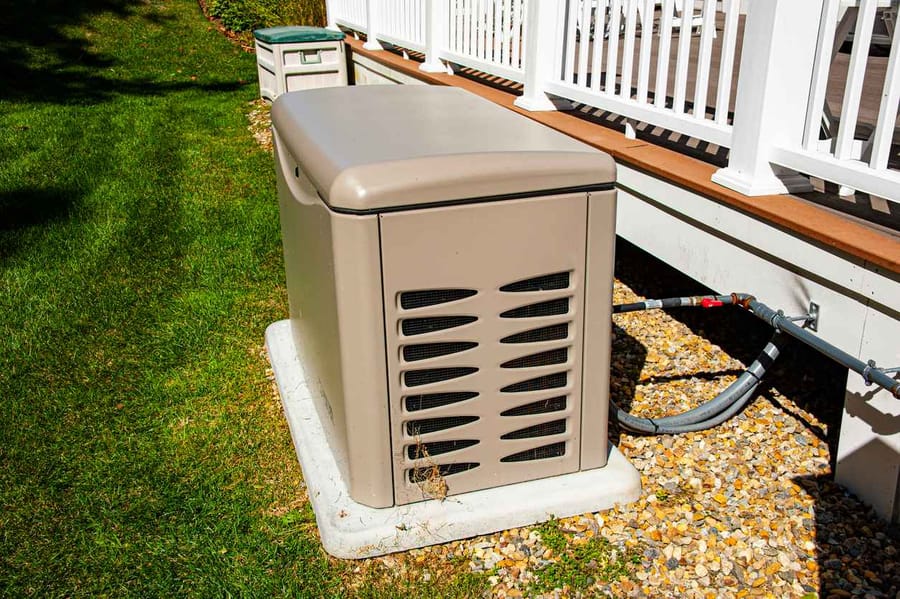0% Financing Available
How Does a Home Generator Work?

In an age where power outages can disrupt our daily lives and leave us vulnerable, having a reliable backup power source is essential for homeowners. A home generator is a remarkable device that ensures uninterrupted electricity supply during emergencies. As a reputable electrical company, Chesapeake Electric aims to shed light on the inner workings of home generators in this comprehensive guide.
Understanding the Basics
A home generator is a self-contained unit designed to generate electricity when the main power supply fails. It operates on the principle of electromagnetic induction, where mechanical energy is converted into electrical energy. The core components of a home generator include an engine, an alternator, a fuel system, and a control panel.
Types of Home Generators
There are different types of home generators to suit different needs and budgets:
Standby Generators: These generators are permanently installed outside the home and are connected directly to the electrical system. They automatically activate when the main power supply is interrupted and can run on natural gas or propane.
Portable Generators: Portable generators are versatile and can be moved around as needed. They are typically fueled by gasoline or diesel and are ideal for powering essential appliances during short-term outages.
Inverter Generators: Inverter generators provide clean and stable power suitable for sensitive electronics. They are more fuel-efficient and quieter compared to traditional portable generators.
How Home Generators Work
Engine: The engine serves as the primary power source in a home generator. It can run on various fuels such as gasoline, diesel, natural gas, or propane. When the generator starts, the engine comes to life, converting the chemical energy in the fuel into mechanical energy.
Alternator: The alternator is responsible for converting the mechanical energy from the engine into electrical energy. It consists of a stationary coil and a rotating magnet. As the engine drives the magnet, it creates a rotating magnetic field around the coil, inducing a current that produces electricity.
Control Panel: The control panel is the brain of the home generator. It houses safety mechanisms, monitoring systems, and controls that allow users to start, stop, and manage the generator. Advanced models also offer features like automatic transfer switches, which seamlessly switch between the main power supply and the generator when an outage occurs.
Transfer Switch (in Standby Generators): A transfer switch is a crucial component in standby generators. It constantly monitors the main power supply. When it detects an interruption, it signals the generator to start automatically and redirects the electrical load from the grid to the generator. This ensures a seamless transition from grid power to backup power.
Regular Maintenance
Chesapeake Electric emphasizes the importance of regular maintenance to keep the home generator in optimal condition. Routine inspections and servicing by a certified technician will ensure that all components function efficiently, and the generator remains reliable when needed most.
Home Generator Services from Chesapeake Electric
A home generator is a vital investment for homeowners, providing peace of mind during power outages and emergencies. Understanding how these devices work empowers homeowners to make informed decisions about their backup power needs. Chesapeake Electric takes pride in offering high-quality home generators and professional installation services, ensuring that families are never left in the dark during unexpected outages. Contact us today for more.
Recent Posts

December 19, 2025

December 19, 2025

December 19, 2025

December 19, 2025

November 21, 2025

November 21, 2025

November 21, 2025